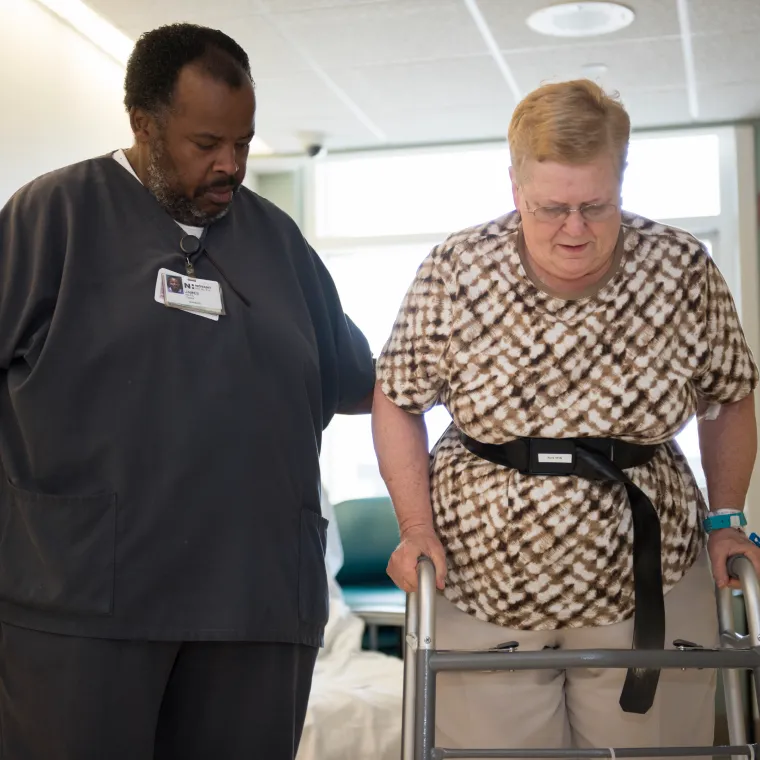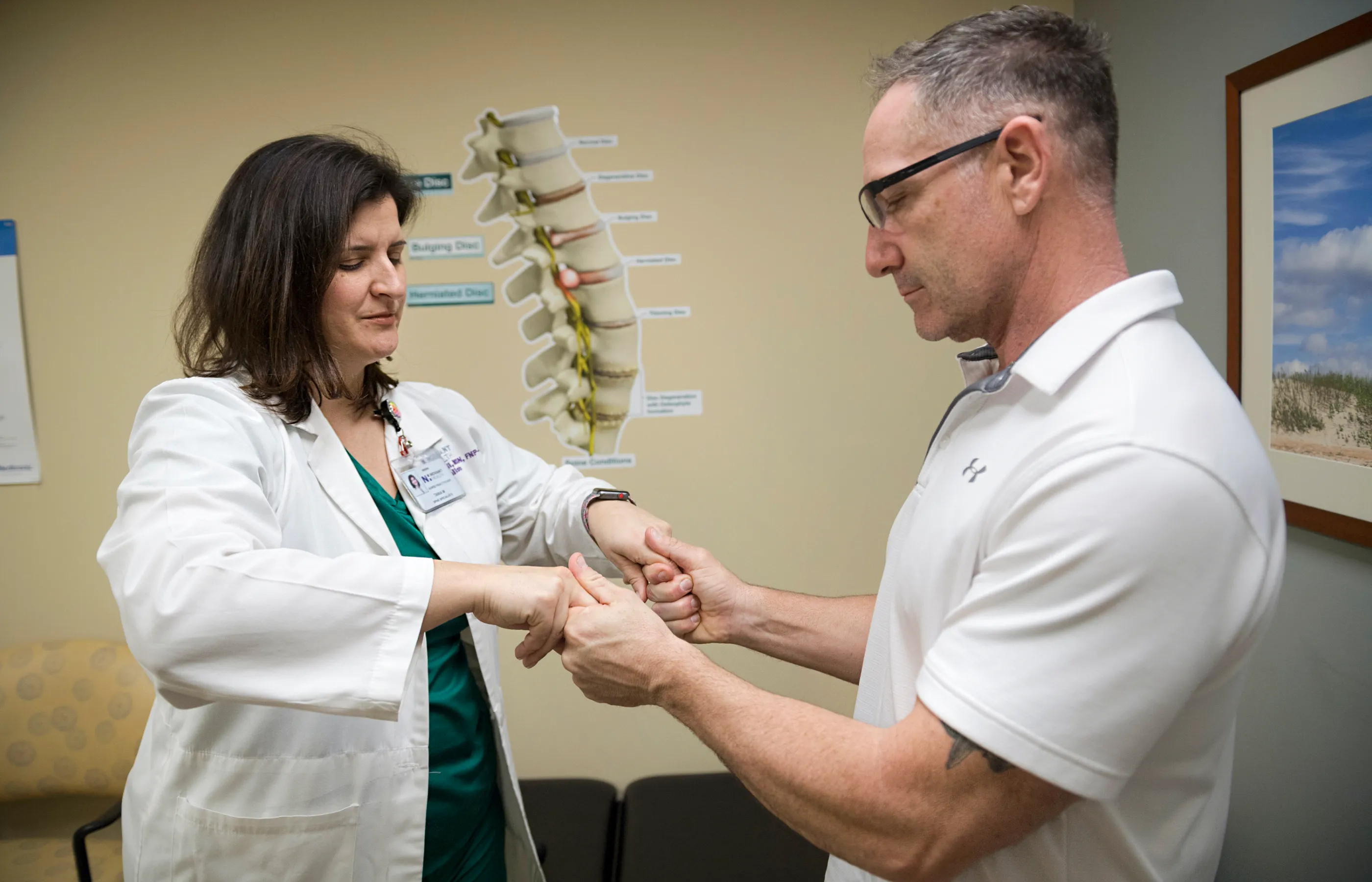Spine, Back and Neck
Get the personalized care you deserve.
If you have pain in your neck, back or spine, it can impact every aspect of your daily life. Work with the team of orthopedic specialists and neurologists at Novant Health to create a treatment and recovery plan.
Causes and Conditions
- Ligament or muscle tears
- Sprains or strains (improper lifting)
- Trauma, including an injury or fracture
- Abnormal growths or tumors
- Joint problems
- Muscle tension or spasms
- Obesity
- Poor muscle tone in your back
- Protruding or herniated (slipped) discs
- Spinal canal narrowing (lumbar spinal stenosis) that creates pinching and discomfort in your lower back, buttocks or legs.
Diagnosis
- Computed tomography (CT) scan: provides a clear view of bones, muscles, fat and organs
- Electromyogram (EMG): evaluates nerve and muscle functioning
- Magnetic resonance imaging (MRI): produces detailed internal images of your body
- Radionuclide bone scan: shows blood flow to your bones and cell activity within the bones
- X-rays: produce images of your bones
Prevention
- Smoking cessation
- Regular exercise with proper stretching
- Maintaining correct posture while sitting, standing and sleeping
- Managing your weight and eating a healthy diet
- Practicing correct lifting techniques
- Reducing emotional stress
Treatment Options
Why Choose Novant Health?
Novant Health is consistently recognized for delivering the highest quality care, with remarkable patient outcomes for neck and back pain conditions. Our Presbyterian Medical Center is a 5-Star Recipient for Back Surgery in 2022. And the New Hanover Regional Medical Center received America's 100 Best Hospitals for Spine Surgery Award™ two years in a row.
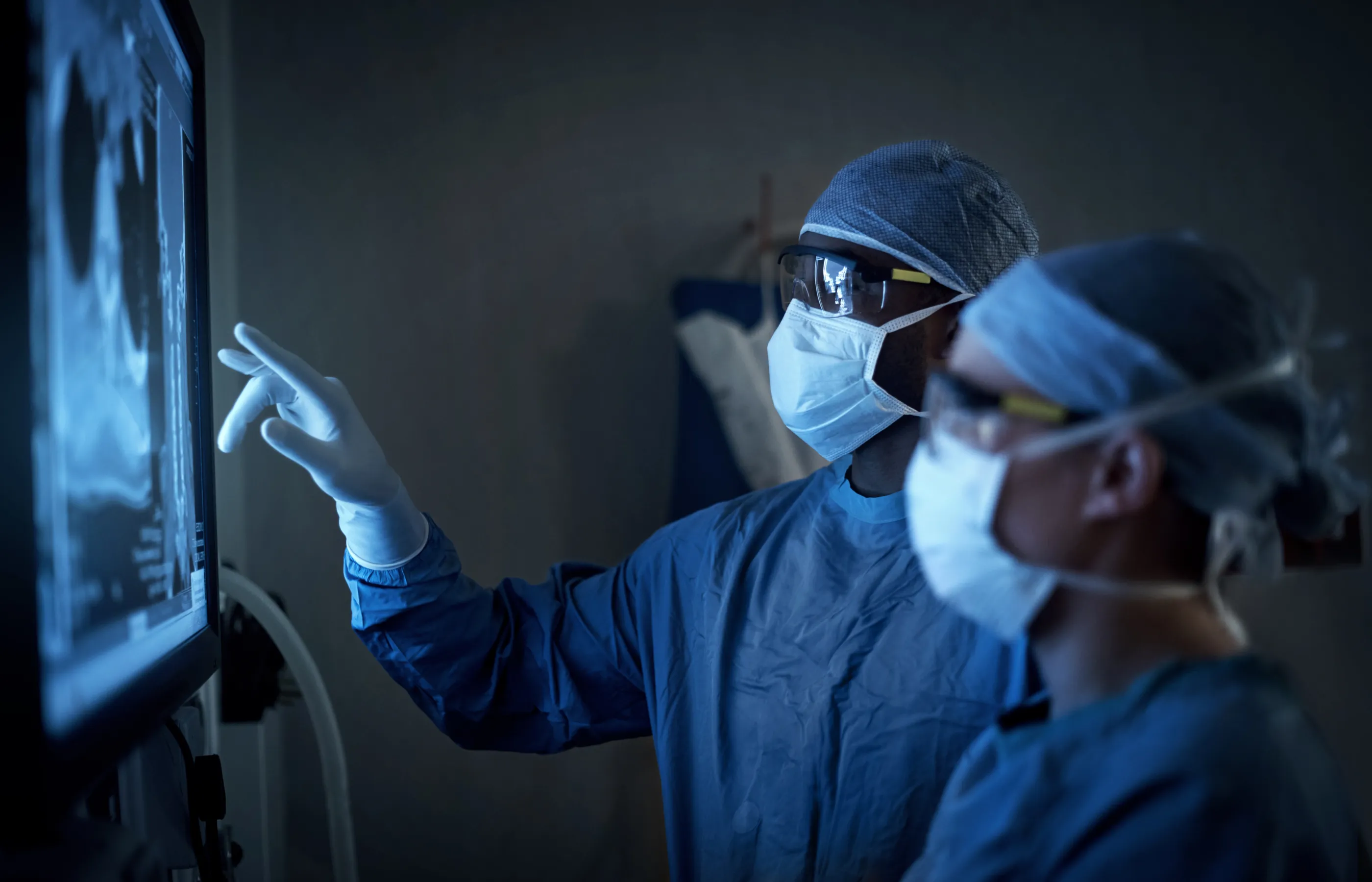
When you need pain relief, you want someone who will listen to your concerns and lay out your treatment options so that together you can find a solution that works best for you. The back, neck and spine specialists at Novant Health go beyond your spinal care. We consider your overall health and well-being.
We also provide the tools you need to stay involved in your treatment and care. Our MyNovant portal and smartphone app let you manage your treatment plan.
With the MyNovant App, you can:
- Find a doctor
- Search locations
- Schedule appointments
- Message your providers
- Request prescription refills
- View test results and records
- Learn about health conditions
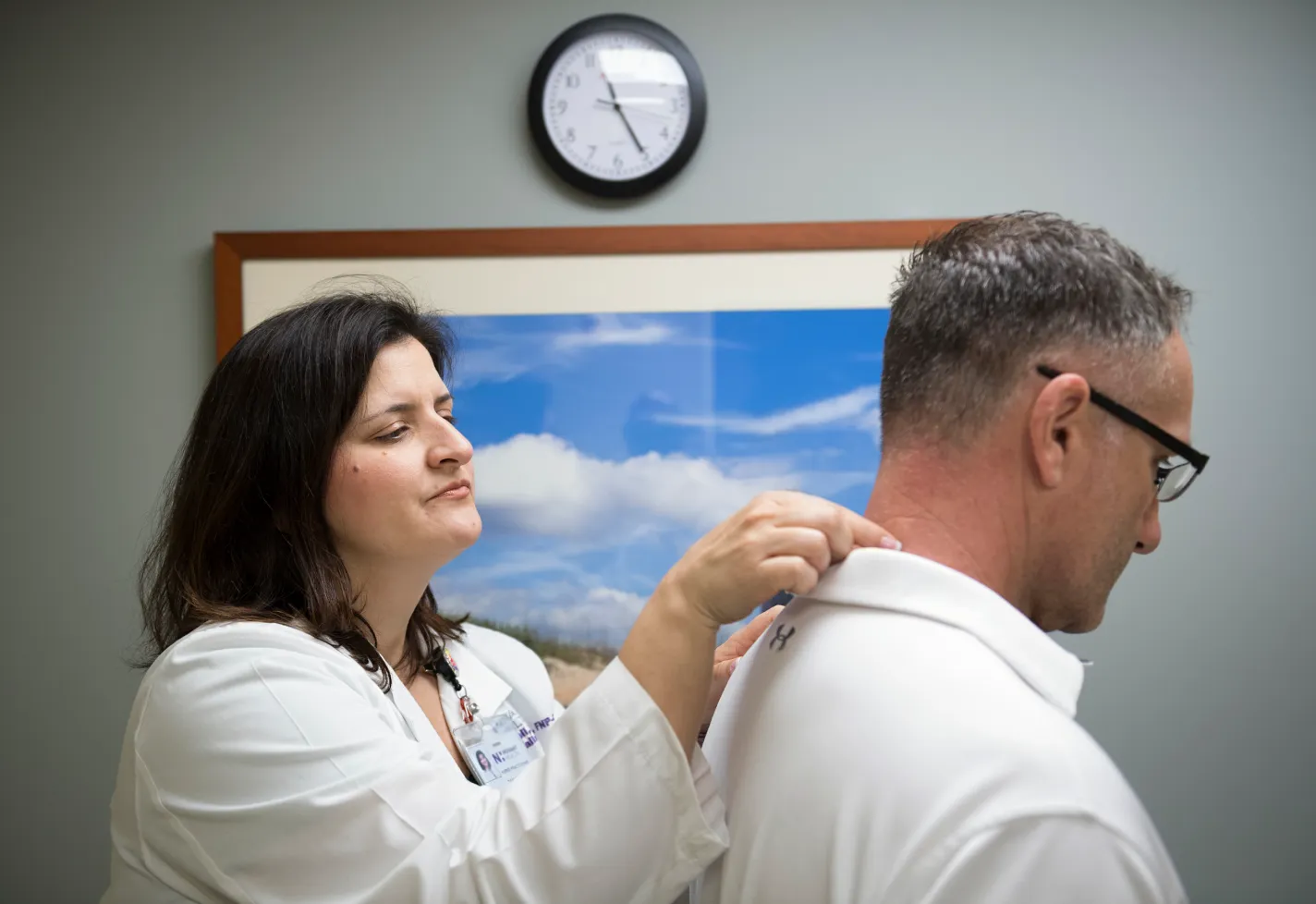
You want a healthcare provider that keeps up with the rapidly growing advancements in medical technology. Novant Health recently announced a dedicated effort to accelerate the development of technological solutions to drive better healthcare results. That enables our physicians to deliver the best possible care — and empowers you to live a healthier and happier life.
You'll benefit from the latest diagnostic and imaging technology, robotic-assisted joint surgery and the Novant Health Institute of Innovation & Artificial Intelligence, which uses AI to enhance and personalize your care and treatment.
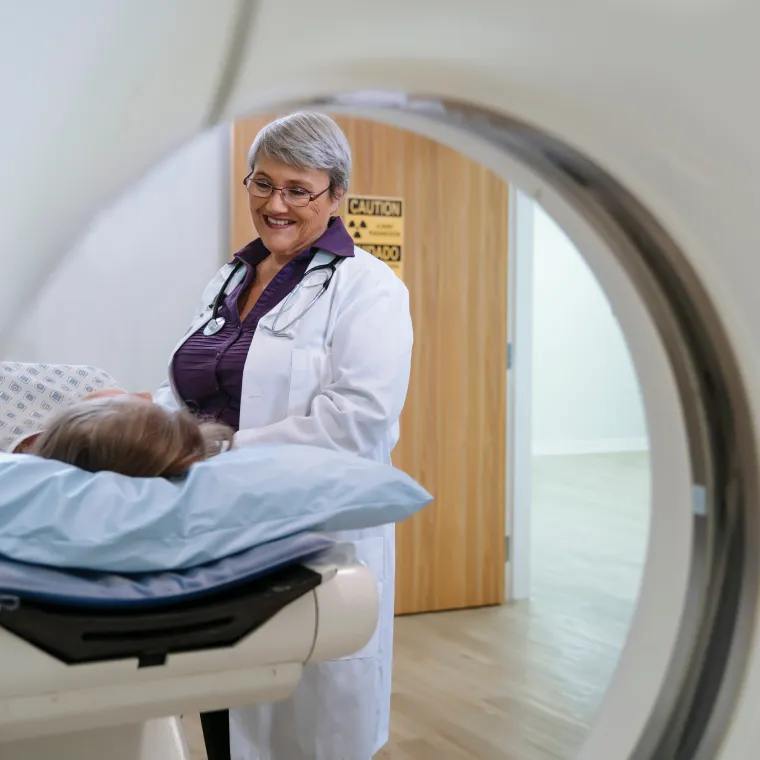
At Novant Health, we have hundreds of locations across the region to provide you with convenient, quality healthcare nearby.
